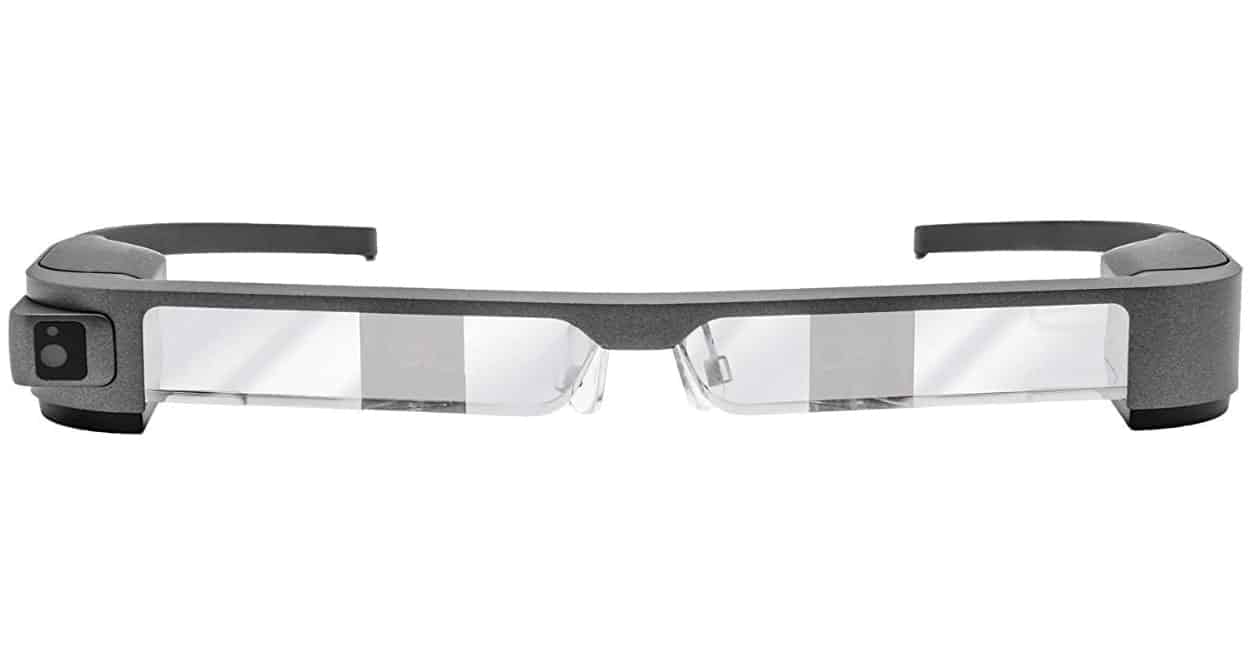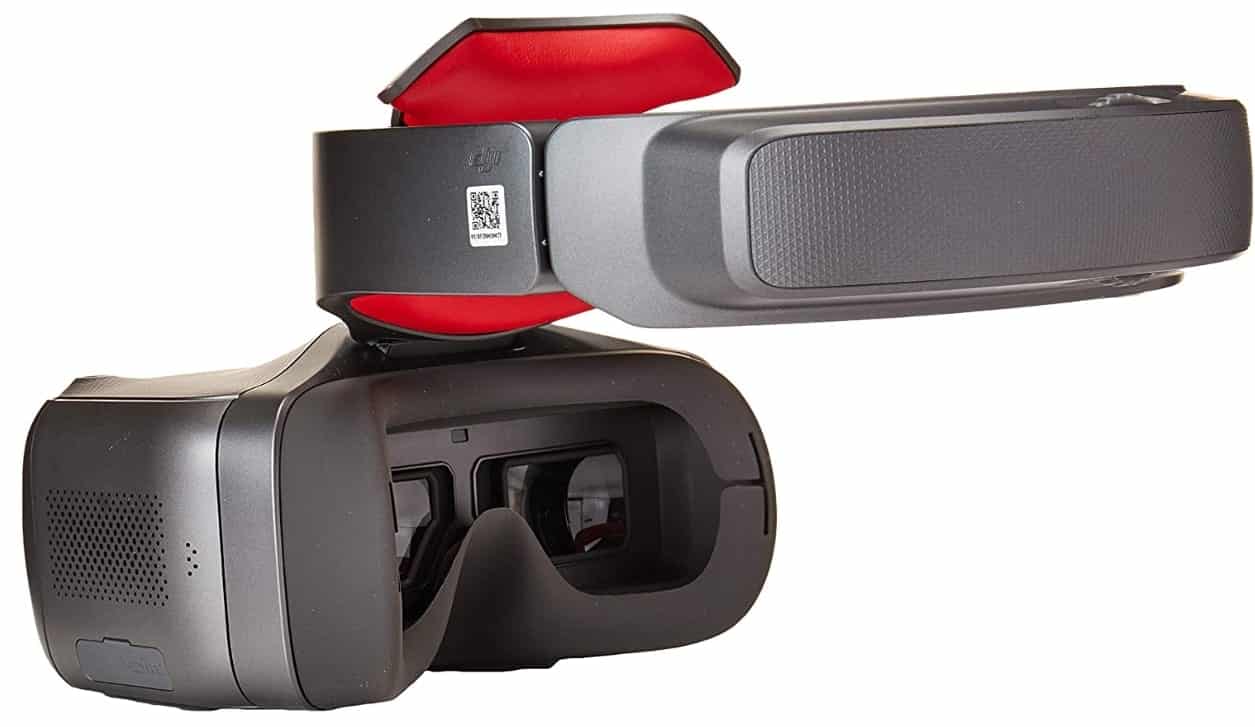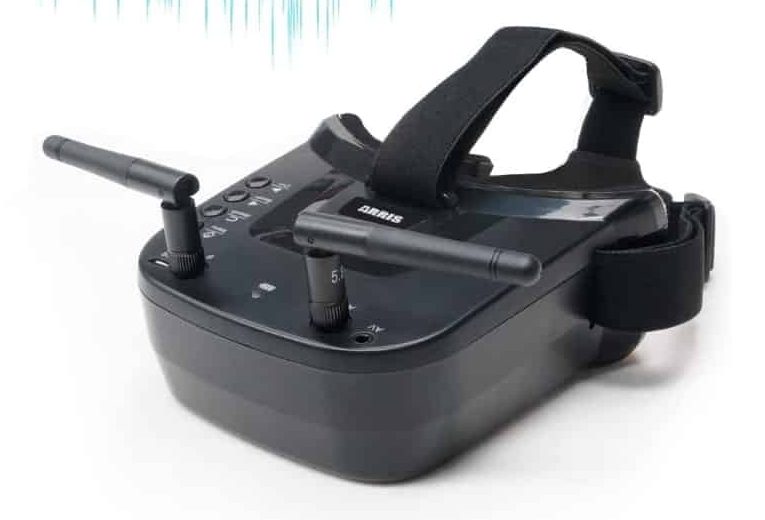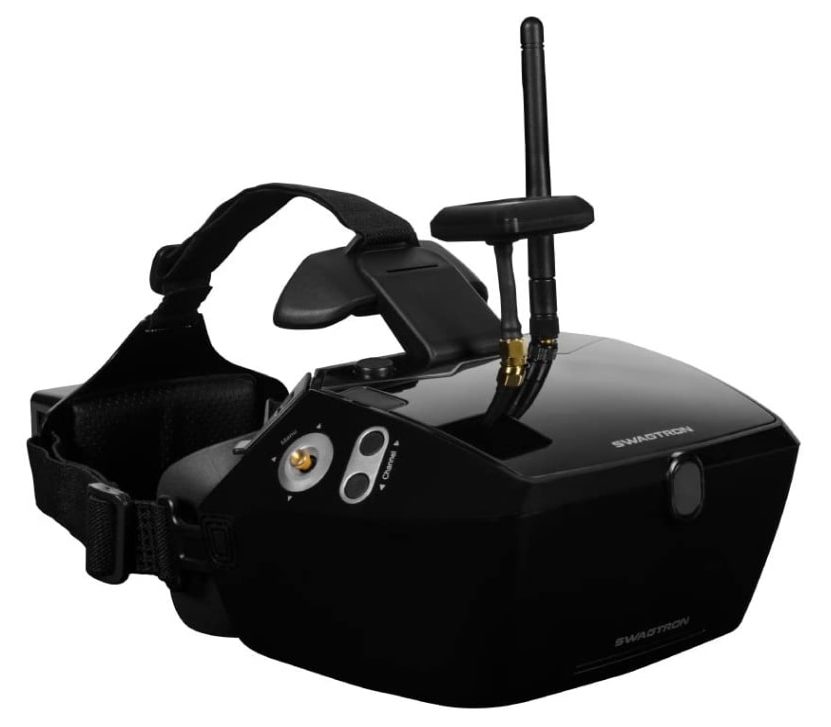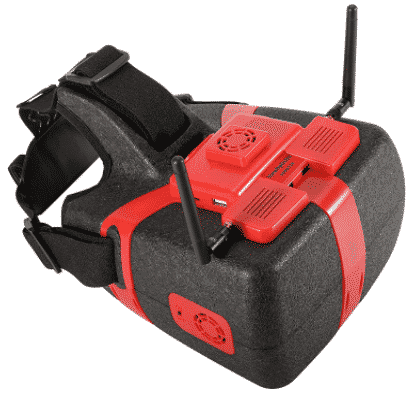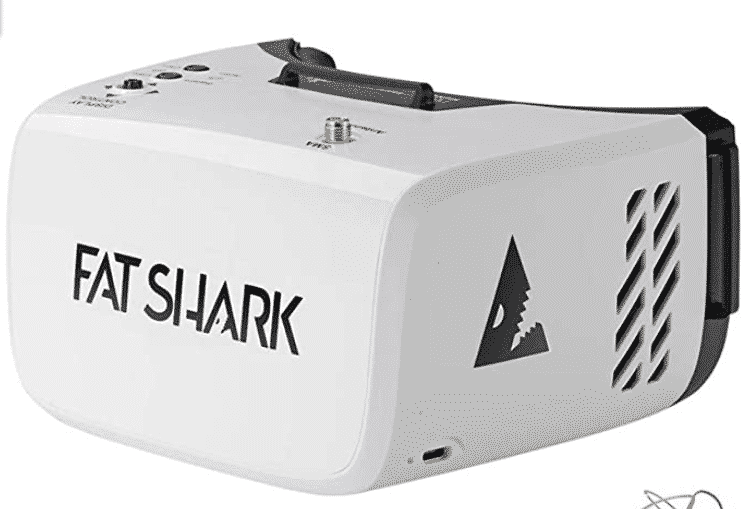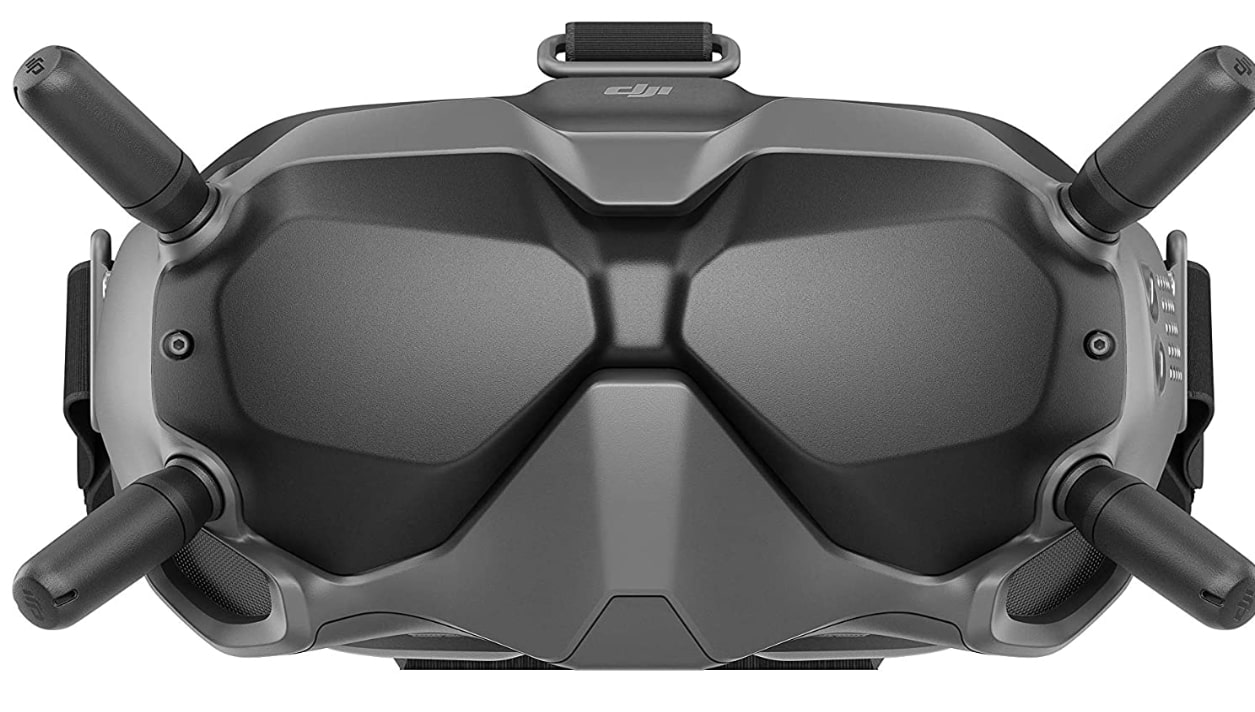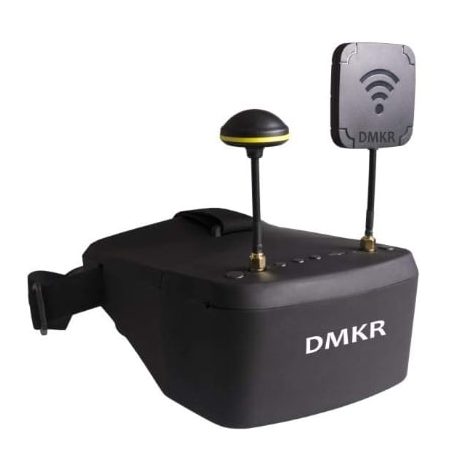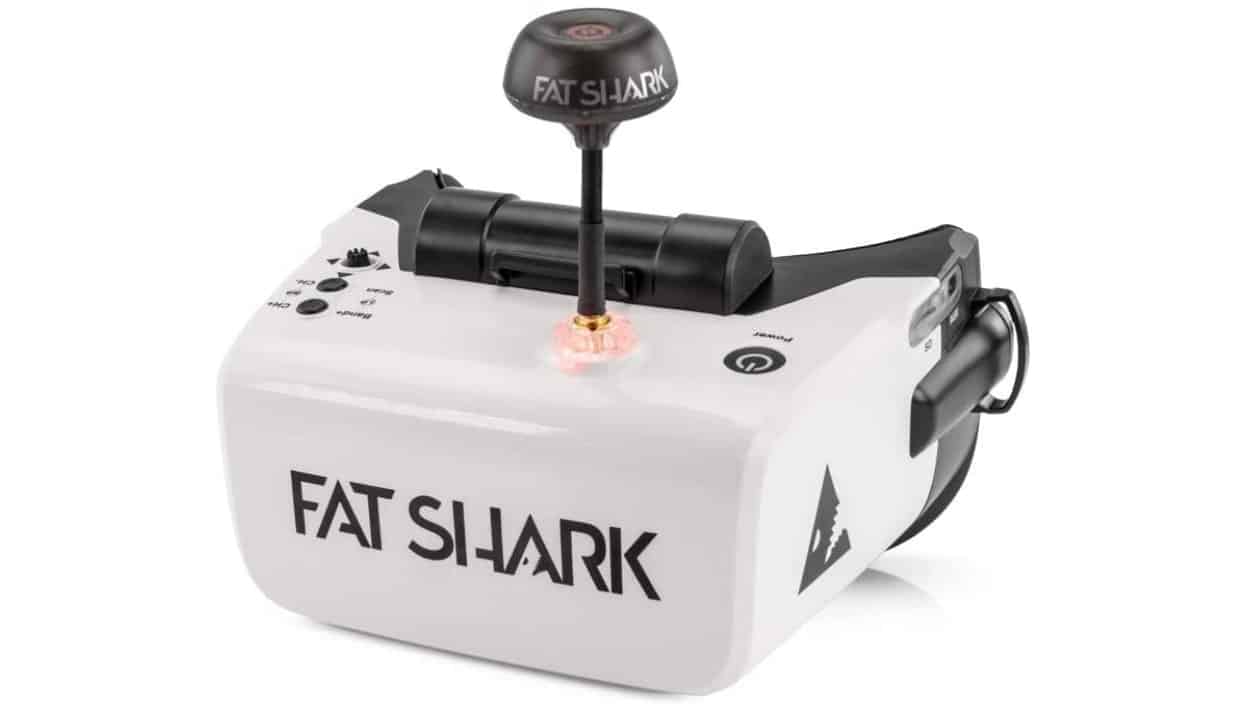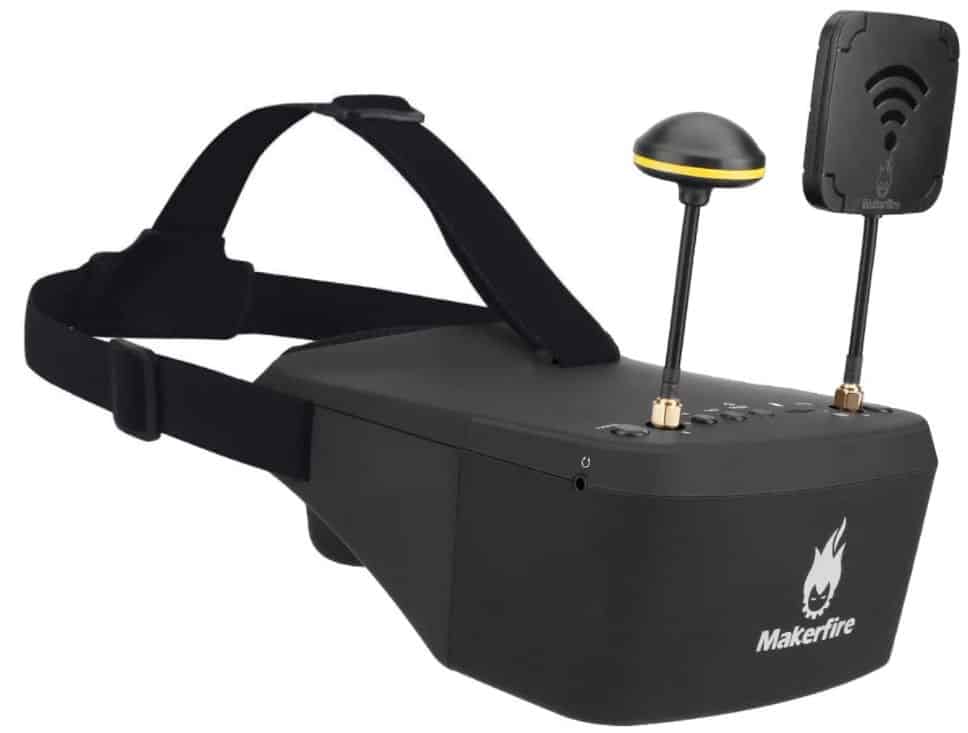Best FPV Goggles For Amazing Drone View
In the modern world of science, drones are one of the most dynamic and enigmatic inventions. A drone is a complex flying machine which can also be equipped with several other devices. A human controls the drone with the help of a remote controller device.
Drones can soar high in the sky and can also go long distances, and thus there needs to be a camera mounted on the drone, which will send visuals for the controller to maneuver the drone accordingly. This is exactly where the need for FPV goggles arises.

FPV stands for a first-person view. The camera mounted on the drones sends first-hand visuals to the FPV goggles, wirelessly, to the controller. FPV aircraft are generally used for aerial photography and videography.
The FPV goggles are worn by the controller just like spectacles or goggles on the face, and you get to see the visuals sent from the camera of the drone, a pilot like view.
With the science and technology boom, we are blessed with varieties of FPV goggles to choose from. FPV goggles come with various features of different sizes, different numbers of antennas, different resolutions, various screen types fitting different budgets. Let’s have a look at the best FPV goggles available at our disposal.
LIST OF BEST FPV GOGGLES
BEST FPV GOGGLES REVIEW
1
EPSON MOVERIO BT-300 - BEST FPV GOGGLES FOR PHANTOM 4
The design of the Epson Maverio BT-300 FPV goggles is what makes it undoubtedly the Best FPV goggles available in the market. The transparent display of this goggles enables you to watch the feed sent from the drone, as well as watch the drone in flight. It can be used for DJI drones.
It is very light and comfortable for you to wear, just like any other goggle. The optical glass features Si-OLED and the front camera records in 1080 p. In fact, it is the world’s lightest Si-OLED powered FPV goggle.
This goggles boast a dark shade, which is a very thought out specification, that enables you to control the drone and watch the visual feed even on a bright sunny day. The user clips hold the controller safe in place. They are powered by a single lithium polymer battery and once fully charged, it has a 6 hour long battery life.
The goggles are prescription glasses friendly, so you don’t have to worry if you wear a prescribed eyewear already. So you can opt for this Best FPV goggles for its features.
Pros
Cons
2
DJI GOGGLES - BEST DRONE FPV GOGGLES
As the name suggests, the DJI goggles racing edition is specially designed for racing. This is one of the best drone fpv goggles which has a very sleek design and are a treat to the eyes. The goggles have an amazing visor, which is metallic matte black in color. The headband is made up of high-quality leather.
The DJI racing edition goggles are compatible with DJI spark Maverick and inspire series drones. The camera module of this goggles is a high performing module. It boats 148 degree FOV. This goggles offers two different viewing modes, one with 1080p and the other offering 720p.
They are powered by a Lithium polymer battery and once fully charged, it gives you 6 hours of battery life. It can send video signals up to 7 kilometers. The DJI racing edition goggles offer 12 transmission channels. The OcuSync module switches between 2.4 GHz and 5.8 GHz channels, if you face any kind of wireless interference.
Pros
Cons
3
ARRIS MINI - BEST FPV GOGGLES FOR THE MONEY
The Arris mini FPV goggle lives up to its name and the hype it has created in the market. The module weighs 165 grams, without antennas and headband. It is based on the Fresnel Optical lens zoom principle. It is designed specifically for beginners and are very simple to use.
The Arris mini FPV goggles feature a built-in 1200 mAH battery. It has a 3 inch high brightness LCD screen. The screen gives resolution up to 480 x 320 pixels. The video time delay is less than 20 milliseconds. The Lithium-ion polymer battery powers the Arris mini FPV goggles, and once fully charged, it gives around 2.5 hours of battery life.
The mini FPV goggles are very small unit and, as mentioned above, very light in weight. It has a highly elastic headband along with a soft sponge pad, making it one of the most comfortable FPV goggles. So this Best FPV goggles is highly recommended for beginners.
Pros
- Comfortable to wear.
Cons
- Not recommended for professionals.
4
SWAGDRONE 4-UP - BEST FPV DRONE GOGGLES
Another lightweight FPV added to the list of the Best FPV goggles is the SwagDrone 4-UP Lightweight FPV VR. This FPV uses 5 different bands and 40 different channels to give you the most vivid images. It is versatile and can be used for both SwagDrone 150-UP and SwagDrone 210-UP. It uses an AV input and output connectivity option.
This goggles feature a 5 inch LCD screen, which enables you to see everything that your drone does in high definition. As the name suggests, the FPV goggles are very light in weight, as they weigh only 1.12 pounds and are designed to be worn for long durations. Whatever you see on these goggles can be shown on a big screen with the help of the AV input-output port.
It is compatible with NTSC and PAL video signals. The LCD screen gives you options to customize contrast and brightness according to your own needs. The 4-UP contains two antennas that help in the transmission of the signal better.
Pros
Cons
- Not recommended for beginners.
5
FLYSIGHT NEWEST - BEST FPV GOGGLES FOR VR
The FlySight FPV goggles are a lovely pair of FPV goggles which come with built-in high sensitivity receivers. This FPV goggles use 5 different band and 40 different channels to give you optimal results. These goggles provide you with low latency 1024x600 display. The camera gives you a FOV of 30 degrees.
To stop the goggles from fogging up, it has an inbuilt automatic fan. The FPV gives a picture in picture features, which help you to check the surrounding environment as well as control the drone at the same point in time.
The Flysight goggles support HDMI V 1.3 and are compatible with DJI Phantoms. The front cameras of these goggles take breathtaking pictures. The front cameras offer 33 degrees FOV(Diagonal). They are light in weight because the battery comes separately. These are very comfortable because of the provided head straps.
Pros
- Built-in automatic fan.
- Amazing front camera.
Cons
- No attached battery.
6
RECON V3 - BEST FATSHARK GOGGLES
Fat Shark is a big name in the FPV industry. The Fat Shark Recon v3 FPV goggles are one of its best sellers. They are trendy among the masses and are very affordable as well. They feature a DVR, which will help you save the recorded footage. The OSD displays the battery percentage, signal strength, and the selected channel to the user.
These FPV goggles use 4 different bands and 32 different 5.8 MHz channels to receive signals. The batteries used are a couple of 18680 Lithium-ion batteries which can be recharged with the help of a simple USB. It is extremely light weighted, and the three-way head strap only adds more value to it.
The design of these FPV goggles is also commendable. Adding to the lightweight and the sleek and compact design, the goggles are very easy to carry around. They also provide you with Ultra-Immersive FOV.
Pros
Cons
7
DJI FPV - BEST HD FPV GOGGLES
DJI dominates the market when we talk about drones, and now it has come up with 2 very good FPV goggles of its own as well. The goggles are compatible with the latest Mavic 2, the Mavic Pro, Phantom 3, Phantom 4, Inspire 1, and Inspire 2.
Just like the racing edition, the standard version can also transmit signals from a distance of 7 kilometers. The pictures produced are very detailed. It boasts 3 different camera modes. The best part about the different modes is that when you select the audience mode, you will be able to view a different camera and get nonstop footage as well.
The settings of the FPV can be changed easily, like brightness, vibrancy, etc. The different modes are LED mode, standard mode, and racing mode. The LED mode is used while taking pictures at dusk, as it increases the saturation of the pictures. The standard model is used in normal and ideal conditions, while the racing mode is used to give for high image saturation.
Pros
Cons
- High price.
- Static causes pixilation.
8
ARRIS EV800 - BEST FPV GOGGLES FOR BEGINNERS
The DMKR DR800D EV800D FPV 3D goggles have dual antennas that give when results when used together. The 2 types of antennas are liner and Omni type. One of the antennas is a 7dBi mushroom antenna, and the other one being a 14dBi panel antenna.
The FPV goggles contain an inbuilt 2000 mAH battery. It weighs around 375 grams without the antennas being installed. These can record up to 1280 x 720 p full frame rate video. The 5-inch screen has a resolution of 800 x 480.
It can be mounted as an FPV ground station on a tripod. It is highly recommended for beginners and for teaching purpose. It has a built-in DVR, which supports up to 126g TF memory card. One of the most dynamic features is its fast-charging battery. So you can opt for this best FPV goggles for its amazing features.
Pros
Cons
- Not diversified.
9
FAT SHARK SCOUT FPV GOGGLES
The Fat Shark Scout FPV goggles are a top-notch choice box style FPV goggles, manufactured by Fat Shark. These are the most sought after box style FPV goggles. Weighing in and around 350 grams, this FPV goggle is very comfortable on the head. These FPV goggles feature a DVR, which mean you can record your flights.
These FPV goggles record at 720 x 480p HD quality. The dual antennas of the Fat Shark Scout FPV goggles mean that when both the antennas are used together, you get a very clear image. One of the antennas is an omni directional antenna and the other antenna is a patch antenna. The goggles come with a rechargeable 18650 Lithium ion battery which is removable also.
The screen of these FPV goggles is a 4 inch LCD with an 1136 x 640 resolution. The Fat Shark Scout FPV goggles provide you with a 50 degree FOV.
Pros
Cons
10
MAKERFIRE 5.8 GHZ FPV GOGGLES
Making it last to the list is the Makerfire 5.8 GHz FPV goggle. As the name suggests, it is actually “video” goggles with a 16:9 display. The removable screen of 4.3 inches gives 800x480 p HD pictures, which can be used as a small monitor or with a tripod. The FPV goggles boast a super wide-angle up to 82 degrees.
It is built-in with sensitive 5.8 GHz 40 channel receiver. The time delay is less than 20 milliseconds. The design is very user friendly, and the goggles come with a comfortable sponge so that you don’t feel stress on your face. The built-in battery in the goggles is a 500 mAH battery. After a full charge, the battery gives 1.5 hours of operation time.
These goggles are easy to use and convenient to carry. This goggles are highly recommended for beginners and even children above the age of 15.
Pros
Cons
FACTORS TO CONSIDER WHEN BUYING THE BEST FPV GOGGLES
1. FOV: Field of view
This is the first feature to look for when choosing your FPV goggles. FOV is an English term for the angle of the field of view: what I can see of my surroundings through the glasses at any given time. When using FPV goggles, there is always a limit to what can be seen. Generally, the field of view is between 25 ° and 45 °.
The more you go upmarket, the greater the viewing angle will be. You will therefore be able to visualize more with your FPV glasses.
2. The inter-pupillary distance
This is the distance between the center of the pupils of your two eyes. This distance depends on the morphology of each and can be measured by your optician. To get the best flight experience, it is essential that the FPV goggles allow the two pupils of the eye to be positioned in the center of the screens.
The best option is to opt for FPV glasses with adjustable IDP (inter-pupillary distance): this will allow you to adjust the position of the screens in relation to your pupils.
3. Image resolution
The resolution of the image that you will view with your FPV glasses will depend on the number of pixels for a given surface. The definition of the image is measured by multiplying the number of pixels in width by the number of pixels in height. We advise you to turn to glasses with better definition.
4. The ratio
The FPV glasses allow you to view the video stream via two ratios with a 4: 3 or 16: 9 display as for televisions. It's up to you to see which ratio suits you best. It is important to verify that the camera you are using films with the same ratio.
5. Video recording
The DVR (Digital Video Recorder) is a small accessory that can be included in the FPV glasses or external and allows you to record the video stream received in your glasses. If your drone does not have or cannot record in HD, you can still record the FPV stream.
This can come in handy if you have lost your drone and can help you find it. The DVR is also widely used to record your Tiny Whoop flights. The only problem is that it also records all video glitches caused by the transmission. You can do without glitches by installing a DVR in your machine such as the Runcam Mini DVR. You will also need a class 6 or higher micro SD card. Personally, I use this one.
6. Video receiver
Do your glasses have a bay or two to be able to install a video receiver? These reception modules operate on given frequency bands: 1.3 GHz, 2.4 GHz, or 5.8 GHz. Check with the seller whether you need to purchase a video receiver with your FPV goggles.
7. Digital Head Tracking
This technology adjusts the orientation of the drone's camera according to your head movements. If you look up, the camera will follow and give you a view above the drone on your FPV goggles. Head Tracking brings more flexibility in your flight sessions and increased immersion.
CONCLUSION
FPV goggles are generally used by people who have been using drones for quite a long time now. Usually, the beginners don’t use FPV goggles as they use the naked eye to visualize the drone and make maneuvers.
But, I recommend you to use FPV goggles if you are really into flying drones or capturing beautiful aerial pictures and videos. It gives taking aerial pictures and flying drones a different affair altogether. Lastly, I would like to suggest all the FPV goggle users keep the goggles away from direct sunlight, as it may damage the LCD screens.
I have listed out the Best FPV goggles and their respective characteristics, hope it helps you choose according to your needs and requirements. Share your comments about this article in the comment section.

